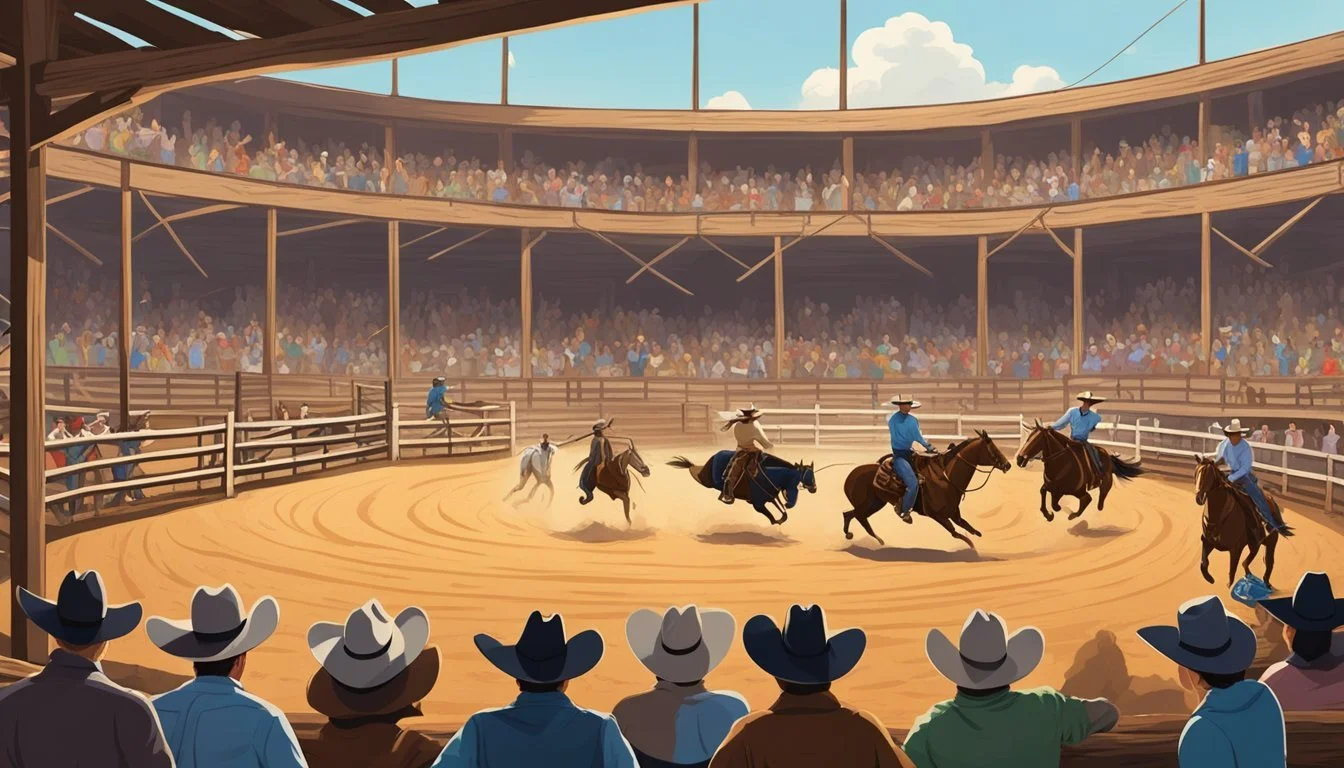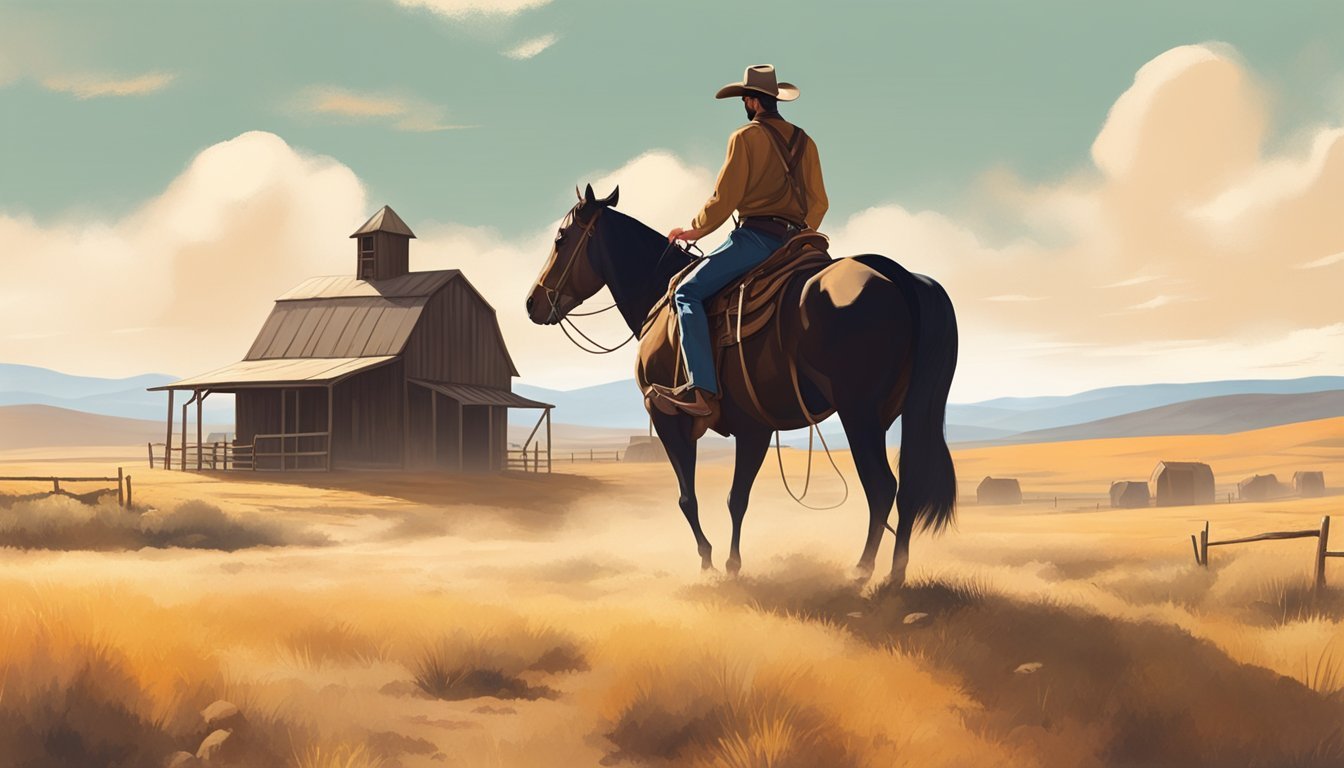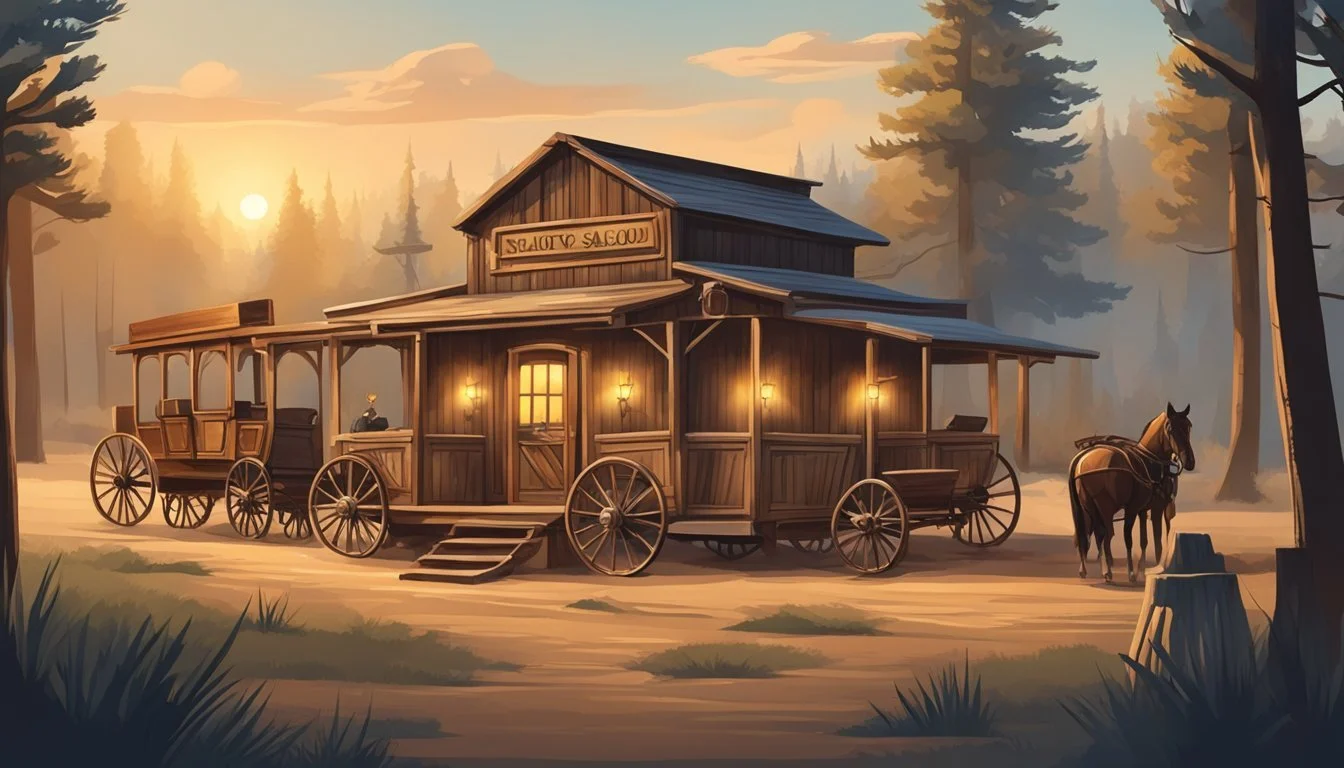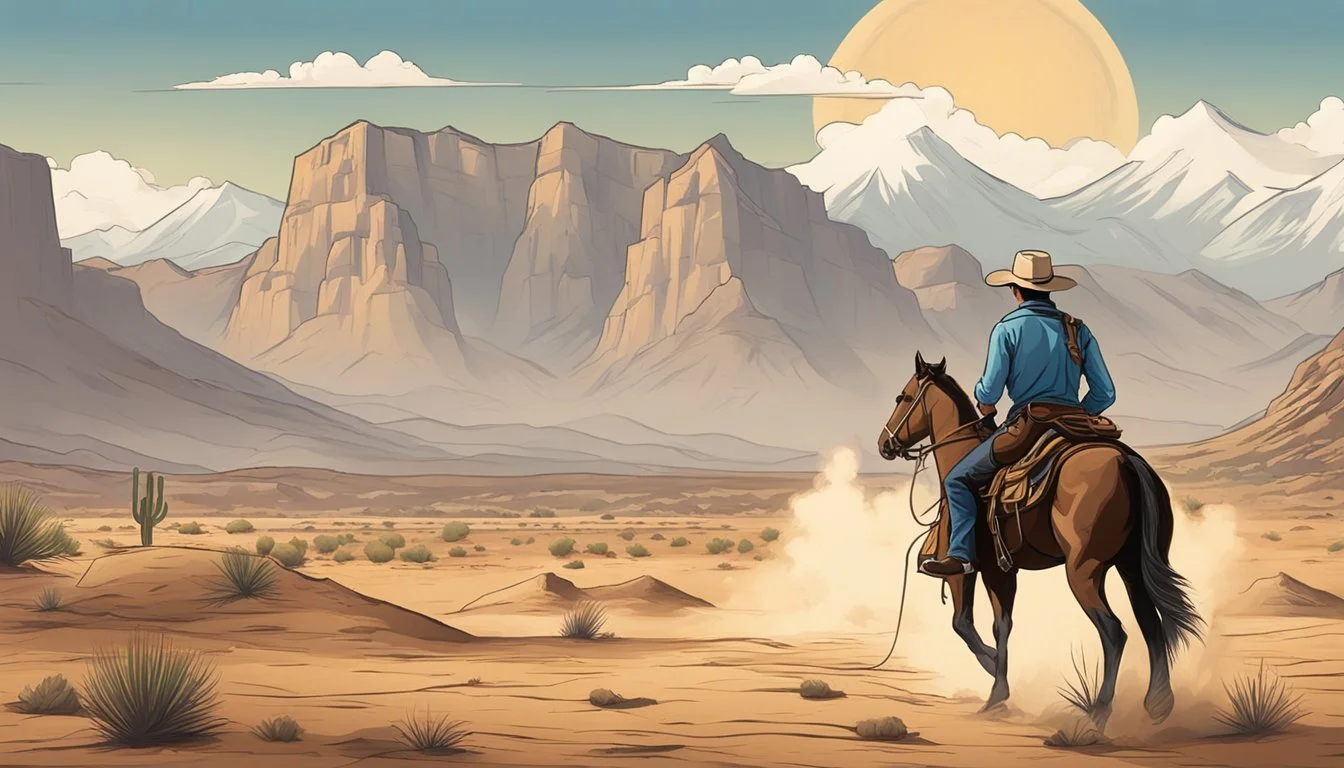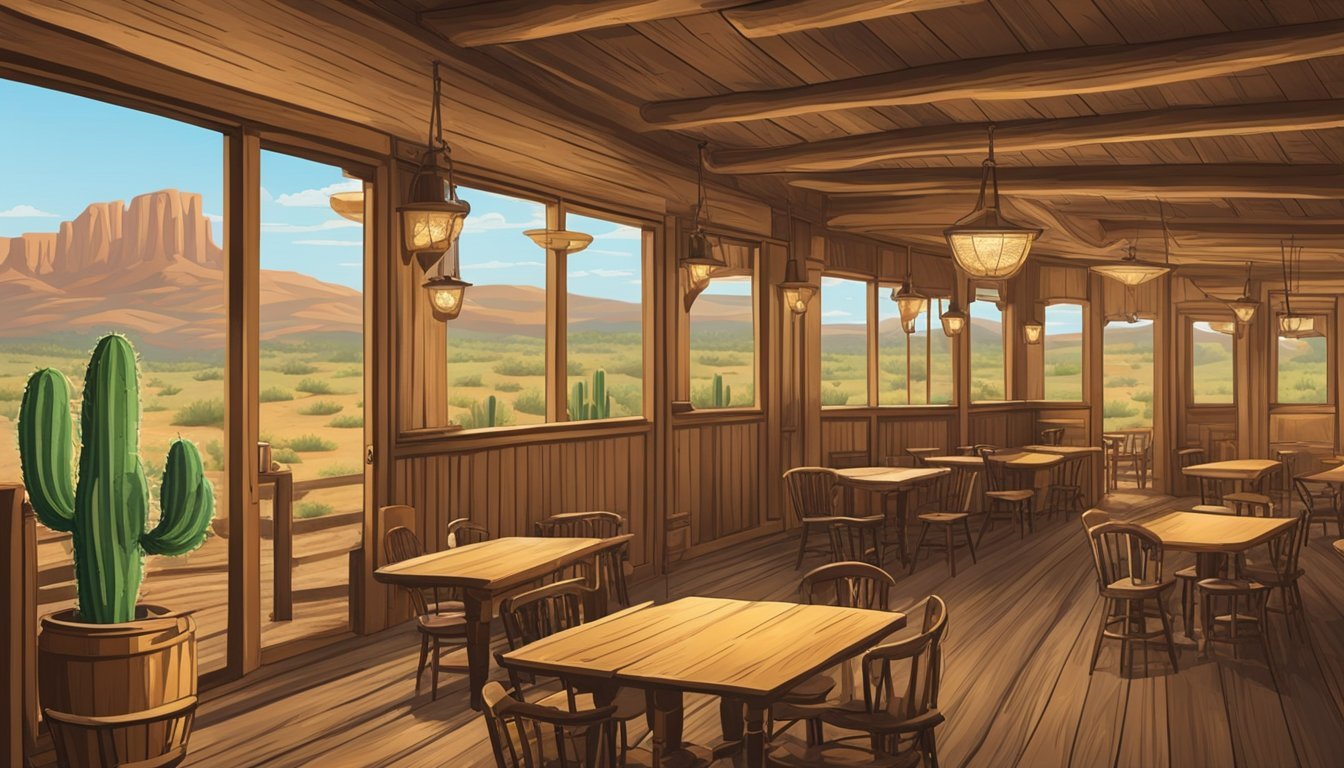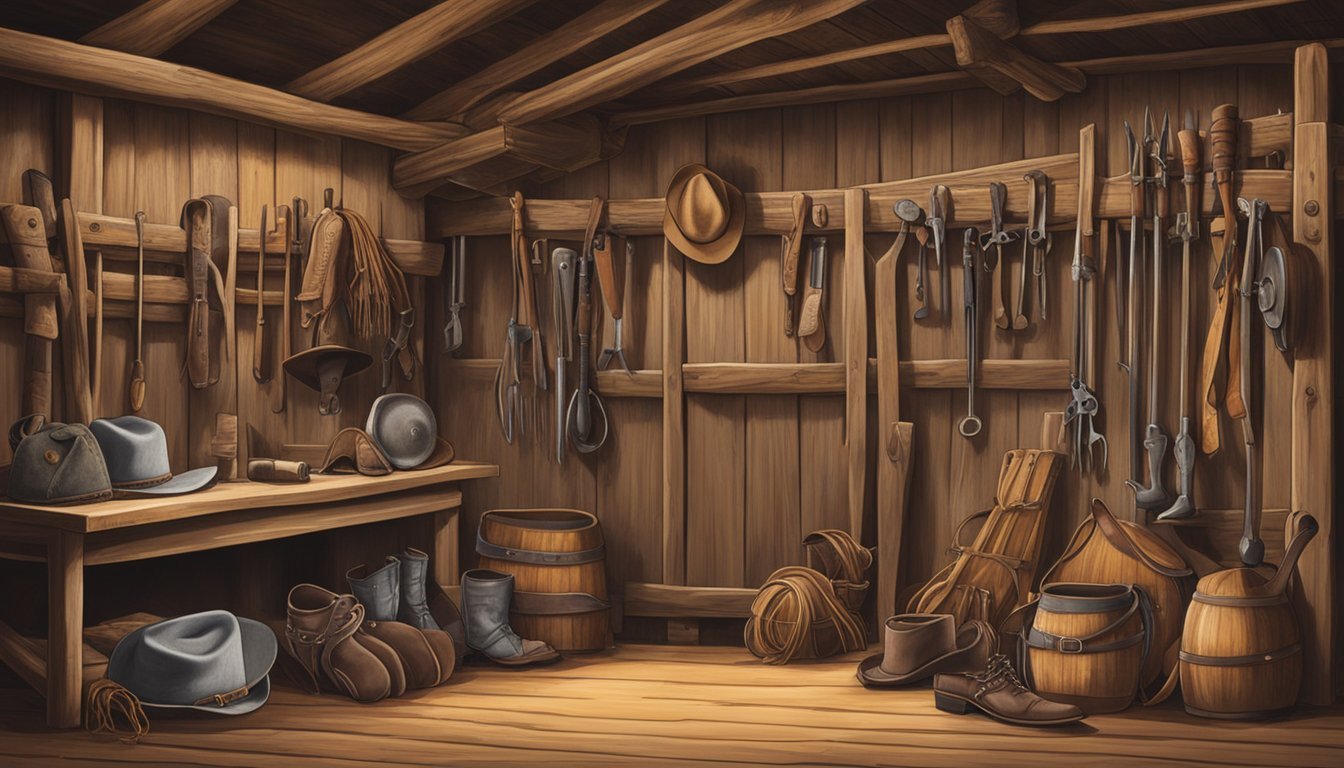The Texas Cowboy's Guide to the Best Western Themed Celebrations
Your Handbook for Authentic Festivities
Texas has long been the heartland of cowboy culture, preserving a rich tapestry of traditions that endure in the modern era. From the historic cattle drives to the raucous rodeos, the Lone Star State offers a western experience unlike any other. These traditions are not mere relics; they are celebrated with gusto across the state, inviting both Texans and visitors alike to step into the boots of a bygone era and relive the old ways of the Wild West.
Throughout the year, Texas hosts an array of western-themed celebrations that capture the spirit of the cowboy lifestyle. Events like the National Cowboy Symposium & Celebration in Lubbock and The Best Little Cowboy Gathering in Texas in La Grange showcase the enduring legacy of the American cowboy. Here, the fusion of horse-handling demonstrations, Western art, and cowboy poetry and storytelling creates an authentic atmosphere that is bound to captivate.
Visitors seeking an immersive western experience will find no shortage of opportunities in Texas. The Fort Worth Stockyards, for example, are a cornerstone of this living history, where twice-daily cattle drives and an array of historic venues transport spectators to another time. These celebrations and destinations serve as custodians of the cowboy heritage, ensuring that the pride and traditions of the Texas cowboy continue to thrive for generations to come.
The Roots of Texan Cowboy Culture
The Texan cowboy tradition deeply intertwines with the state's history, reflecting the legacy of vaqueros and the indelible imprint of ranching on its cultural tapestry.
Historical Influence of Vaqueros and American Cowboys
The vaquero, the predecessor of the American cowboy, was instrumental in establishing Texas's cowboy culture. Originating from Mexico, these skilled horsemen excelled in ranching and herding techniques, honing their skills across generations. Their expertise laid the groundwork for the cowboy way of life, blending Spanish equestrian skills with Native American influences to craft a unique cultural identity.
The Role of Ranches in Shaping the Western Tradition
Texas's ranches have played a pivotal role in perpetuating cowboy culture. The iconic King Ranch, founded in 1853, became a hallmark of innovation in cattle ranching. With a vast expanse covering hundreds of thousands of acres, it was more than just a hub for cattle. King Ranch was a societal touchstone that helped solidify the lore of the American cowboy and the ranching lifestyle as an indelible American icon.
Preserving Heritage at The Witte Museum and King Ranch
Efforts to preserve and promote cowboy heritage thrive at places such as The Witte Museum in San Antonio. The museum's exhibitions showcase the way of life of both vaqueros and American cowboys, offering insights into their daily life and the evolution of ranching. At King Ranch, visitors experience history firsthand, witnessing the legacy and continued practices of ranching that shaped Texas. The preservation of this heritage brings to life the enduring spirit and cultural richness of the cowboy tradition.
Signature Elements of a Western Themed Celebration
A Western themed celebration hinges on its authenticity and attention to detail, encompassing everything from attire to decor elements that conjure the spirit of the Wild West.
Adopting the Cowboy Dress Code
Essential to any Western themed event is the dress code, which typically includes Western wear like cowboy hats and boots. Attendees often opt for durable denim, flannel shirts, and accessories such as bolo ties to complete the look. Attention to the elements like these, including the incorporation of a rich, earthy color palette, is crucial for creating an authentic Western ambiance.
Western Decor: From Mason Jars to Lanterns
Distinctive Western decor is characterized by the use of items like mason jars and lanterns that blend functionality with rustic charm. Tables can be adorned with bold bandanas as napkins and centerpieces featuring wildflowers in mason jars. Lanterns provide both a practical and aesthetic lighting solution, enhancing the venue with a glow that echoes the bygone era of the cowboy.
Elevating Atmosphere with Campfires and Open Flames
The glow of campfires and candles brings a warm, inviting atmosphere that is key for a Western celebration. They not only provide light and warmth but also create a central gathering spot for guests to socialize. Safety and local regulations should always be considered when incorporating open flames into an event setting.
Authentic Western Entertainment Options
The essence of a Western themed event can be captured through authentic entertainment options. Live bands playing country music, demonstrations of lasso skills, or even a mechanical bull can offer guests an immersive cowboy experience. Elements from rodeos can also be adapted for entertainment value, ensuring an engaging celebration that is true to the Western spirit.
Culinary Delights for a Western Themed Party
When hosting a Western-themed party, the selection of culinary delights should tantalize taste buds with the hearty richness of beef and savory bites, complemented by sweet treats and a range of themed beverages. The heritage of cowboy cooking adds an authentic open flame cooking experience to the event.
Savoring the Rich Flavors of Beef and Savory Bites
Beef takes center stage at any Western-themed party. One can serve up Grilled Steaks marinated in bold spices or present a traditional Brisket slow-cooked to tender perfection. Savory bites might include miniature Corn Muffins or Beef Empanadas (What wine goes well with beef empanadas?), capturing the spirit of the range with robust flavors.
Recommended Savory Bites:
Grilled Steaks – Marinated with herbs and spices
Beef Brisket – Slow-cooked with a smoky rub
Corn Muffins – Made with sweet corn and cheddar cheese
Beef Empanadas – Stuffed with seasoned ground beef and vegetables
Sweet Treats and Dessert Inspirations
A Western-themed menu wouldn't be complete without a nod to sweet endings. Desserts can range from Apple Pie served with a scoop of vanilla ice cream to Pecan Bars drizzled with caramel. These comforting sweets provide a delectable finish to the hearty meal.
Dessert Selection:
Apple Pie – Classic dessert with cinnamon and nutmeg
Pecan Bars – Rich and nutty, with a buttery crust
Crafting the Perfect Western-Themed Beverages
The bar should be stocked with spirits for crafted drinks such as Bourbon and Whiskey. Guests might enjoy a smoky Bourbon Old-Fashioned or a refreshing Gin Julep. A classic Margarita can offer a taste of the Southwest, perfect for entertaining.
Drink Assortment:
Bourbon Old-Fashioned – A smoky and aromatic classic
Gin Julep – A minty twist with crisp gin
Margarita – Citrusy and salty, always a crowd-pleaser
The Art of Cowboy Cooking and Open Flame Techniques
The authenticity of a Western-themed celebration can be elevated with open flame cooking techniques. Demonstrating the art of cowboy cooking and grilling imparts a rustic charm and allows the rich flavors of the food to take root. Guests can watch as meats are seared over a bed of glowing coals, imparting a unique smokiness that cannot be duplicated indoors.
Open Flame Favorites:
Skewered Meats – Seasoned and grilled to perfection
Grilled Vegetables (What wine goes well with grilled vegetables?) – Charred and tender, often seasoned with herbs
The Perfect Western Wedding
A Western wedding combines tradition with a rustic, country-style charm that showcases the couple's love for the iconic cowboy culture. Properly selected attire and decorations are essential to convey the Western theme authentically.
Choosing a Color Palette and Western Attire
When planning a Western wedding, the color palette often includes earthy tones like browns, greens, and sun-washed colors, accented with vibrant hues that reflect the setting sun. Warm colors complement the natural landscape and wooden textures typically found at these events.
Men's Attire:
Shirt: Consider a denim western shirt or a classic white button-down.
Pants: Boot cut dress jeans or dark-colored slacks.
Outerwear: A tweed blazer adds formality.
Accessories: Cowboy boots and a bolo tie complete the look.
Women's Attire:
Dress: A country-style wedding dress often incorporates lace and modest frills.
Footwear: Embroidered cowboy boots can be both comfortable and stylish.
Accessories: Consider turquoise jewelry or a leather cuff bracelet.
Decorating with a Romantic Western Flair
The right decor can make a Western wedding feel both authentic and elegant.
Table Settings:
Centerpieces: Use lanterns or candles to add warmth and romance.
Tableware: Incorporate rugged elements like tin plates or mason jars for drinks.
Ambiance:
Lighting: String lights and lanterns provide a soft, inviting glow.
Floral Arrangements: Wildflowers in mason jars or milk jugs add a country touch.
Thematic Elements for Ceremonies and Receptions
A Western-themed wedding isn't complete without certain key elements that echo the cowboy spirit throughout the ceremony and reception.
Ceremony:
Aisle Decor: Line the walkway with hay bales or wooden barrels.
Altar: Use natural wood arches or a backdrop of open landscapes.
Reception:
Music: Country bands or folk singers set the ideal mood.
Entertainment: Consider a dance floor for line dancing or square dancing.
Bringing these elements together, couples can create a Western wedding experience that's authentic and memorable for all who attend.
Embracing Cowboy Traditions Beyond Texas
Cowboy traditions, steeped in the rich heritage of the Lone Star State, have left a lasting imprint on Western celebrations across the United States. This cultural migration has seen traditions once unique to Texas take root in states like Wyoming and beyond.
The Lone Star State's Influence on Western Celebrations
The ethos of Texas, often characterized by ten-gallon hats and spurs, transcends its borders to influence Western celebrations nationwide. States across America emulate the Texan rodeo circuit and its vibrant festivals, where cowboy boots and hats remain as much a statement of identity as a nod to utility. Events such as the Houston Livestock Show and Rodeo set the standard high, often inspiring sister events in places as diverse as California and Florida.
Key Influences:
Attire: Cowboy hats and boots as cultural symbols.
Festivities: Rodeos, parades, and music embodying Texas essence.
Exploring Cowboy Culture in States like Wyoming and Beyond
Wyoming stands as a testament to the pervasiveness of cowboy culture in America. Beyond the rolling prairies of Texas, the Cowboy State is steeped in its own storied history of ranching and rodeo. Towns like Cheyenne and Cody typify this tradition, with annual events such as Cheyenne Frontier Days attracting global attention and participation. Here, cowboy culture is not simply a page in history books, but a living, breathing aspect of daily life.
Iconic Events:
Cheyenne Frontier Days: The world's largest outdoor rodeo.
Cody Stampede Rodeo: A century-old tradition.
Rodeos and Cattle Drives: The Nationwide Appeal
Rodeos and cattle drives encapsulate the enduring cowboy spirit that resonates throughout the United States. From the rodeo scene of Oklahoma to the open ranges of Montana, these traditions celebrate the skills and lifestyles of the American cowboy. States adopt these practices not only for their entertainment value but also to honor the historical significance of cowboys and their contribution to American heritage.
Nationwide Celebrations:
Oklahoma's Rodeos: A mix of competitive spirit and cultural showcase.
Montana's Cattle Drives: Commemorative trails echoing past voyages.
Integrating Texan Western Experience into Educational Contexts
Integrating Texan culture and history into education is vital for preserving the state's heritage. It provides students with a tangible connection to the past, enhancing their understanding and appreciation of Texas' rich Western legacy.
School Programs and Field Trips to Historical Sites
San Antonio and Fort Worth offer a wealth of opportunities for school programs seeking to immerse students in Western heritage. In San Antonio, educators can organize field trips to historical sites that showcase Texas' cowboy era, notable for its blend of Native American, Spanish, and Western influences. The Tejas Rodeo Company provides a hands-on experience, allowing students to witness the skills and traditions of professional cowboys in action.
Educational destinations include:
Historic ranches where students engage with the daily life of cowboys.
The Fort Worth Stockyards, where the cattle-driving tradition is still celebrated with daily demonstrations.
Educational Workshops and Demonstrations
Curricular enrichment can be attained through educational workshops that focus on specific aspects of cowboy life and Texan culture. Demonstrations of classic Western skills such as horse-riding, lassoing, and cattle herding engage students in an interactive learning experience. Educational entities often work with knowledgeable staff and cowboys to ensure that workshops are not only informative but also historically accurate, instilling a sense of confidence and knowledge in the young scholars.
Key components of educational workshops:
Living history presentations at institutions like the Institute of Texan Cultures.
Skills demonstrations that enable students to learn through observation and participation.
The Necessity of Range Management and Ecology
In the ecosystem of western-themed celebrations, one cannot overlook the vital roles of both range management and ecology – elements that are fundamental to maintaining the robust integrity of the lands that cowboys have roamed for centuries.
Understanding the Importance of Sustainable Practices
Range management is essential for sustaining the ecosystems that cattle ranches depend on. It incorporates a variety of practices designed to balance the needs of the environment with economic demands. Sustainable ranching involves rotational grazing, which prevents overgrazing, and the use of eco-friendly tools and techniques. For example, cowboys may employ solar-powered water pumps instead of diesel engines, reducing their carbon footprint.
Rotational Grazing: Allowing vegetation to recover, which supports biodiversity.
Barbed Wire Fences: Strategically used to control cattle movement and protect sensitive areas.
The Impact of Cowboy Culture on Range Ecology
Cowboy culture has left an indelible mark on range ecology. Traditions and practices have evolved to reflect an understanding of the land's limits and potentials. Cowboys, as stewards of the range, have adopted tools such as GPS for herd tracking and barbed wire for effective land management. Their choice of tools and techniques can significantly influence the ecological balance, affecting soil health, plant diversity, and water resources.
Cowboy Culture: Embodies a respect for the land, leading to more conscientious range practices.
Tools and Technology: Modern cowboys integrate traditional knowledge with new technology to manage the land responsibly.
Cowboy Innovations and Tools of the Trade
Throughout the evolution of the Texas cowboy, the tools and technologies have played a pivotal role, from early gear adaptations to modern-day innovations in rodeo and ranching.
The Evolution of Cowboy Gear
The gear of a cowboy has historically been both practical and innovative, designed for the challenges of life on the range. Spurs, for example, have evolved from simple metal tools to intricate pieces showcasing craftsmanship, often with silver overlay. The lasso, another quintessential tool, has seen improvements in its material composition to enhance durability and flexibility.
Barbed wire, a revolutionary fencing tool, effectively ended the era of the open range, altering the landscape of American ranching. It provided a cost-effective method for ranchers to control vast territories and manage their cattle operations efficiently.
The roundup demands a selection of highly specialized equipment, such as various kinds of saddles tailored to specific tasks. Cowboys would carry everything needed to herd, sort, and manage livestock over vast areas, with the roundup central to ranch operations, facilitating cattle management and driving cowboy gear innovation.
Modern-Day Rodeo and Ranching Technologies
Modern technologies have revolutionized rodeo and ranching activities, enhancing both efficiency and safety. Today's rodeos incorporate advanced equipment like electronic timers and engineered rodeo gear, designed to ensure both the safety of the rodeo athletes and the welfare of the animals involved.
Within ranching, technological advancements are seen in various tools and machines. GPS and drone technology aid in monitoring livestock and ranch lands, while sophisticated tagging systems are used to track health and breeding information. Ranches now use an array of modern machinery for tasks that cowboys of the past would have conducted by hand, representing a significant shift in how the trade operates.

